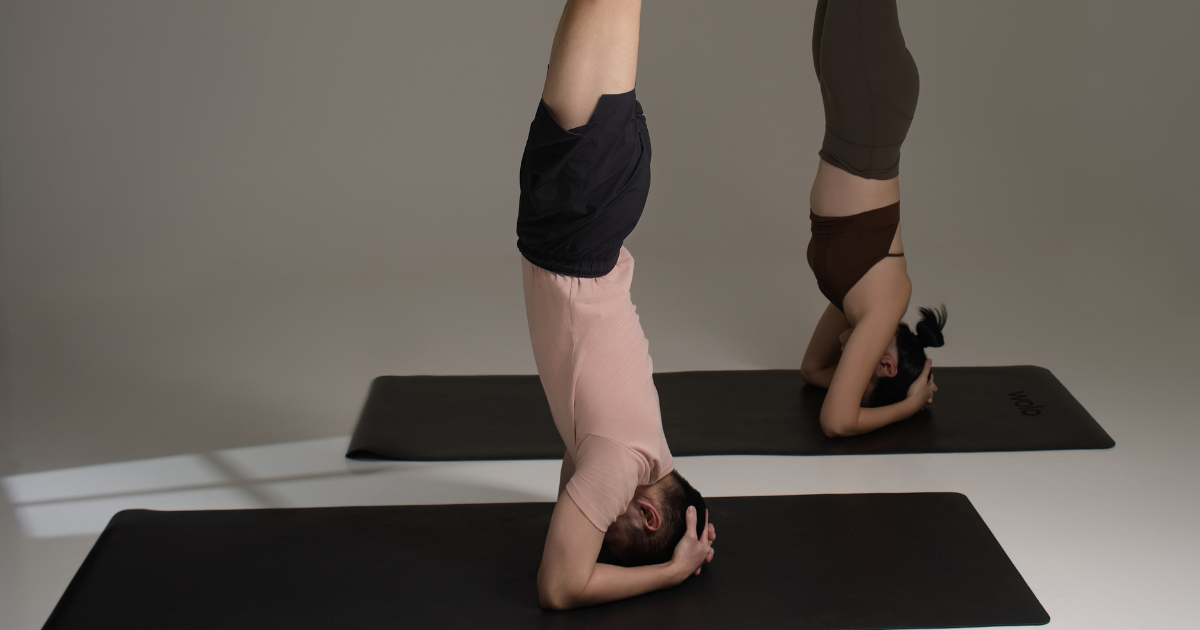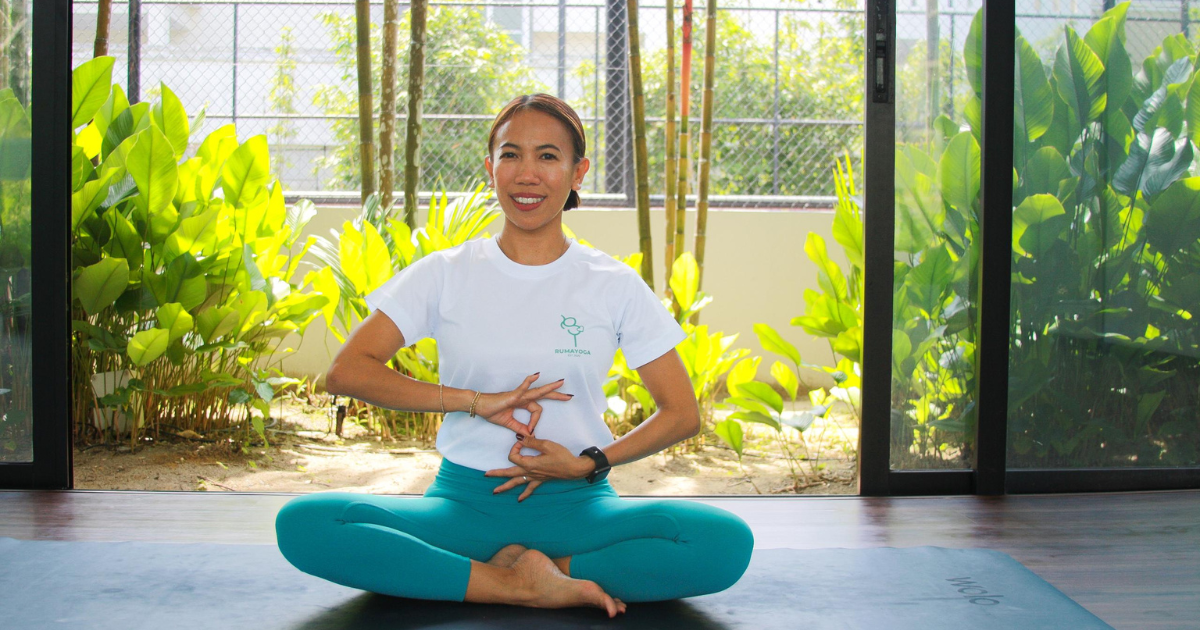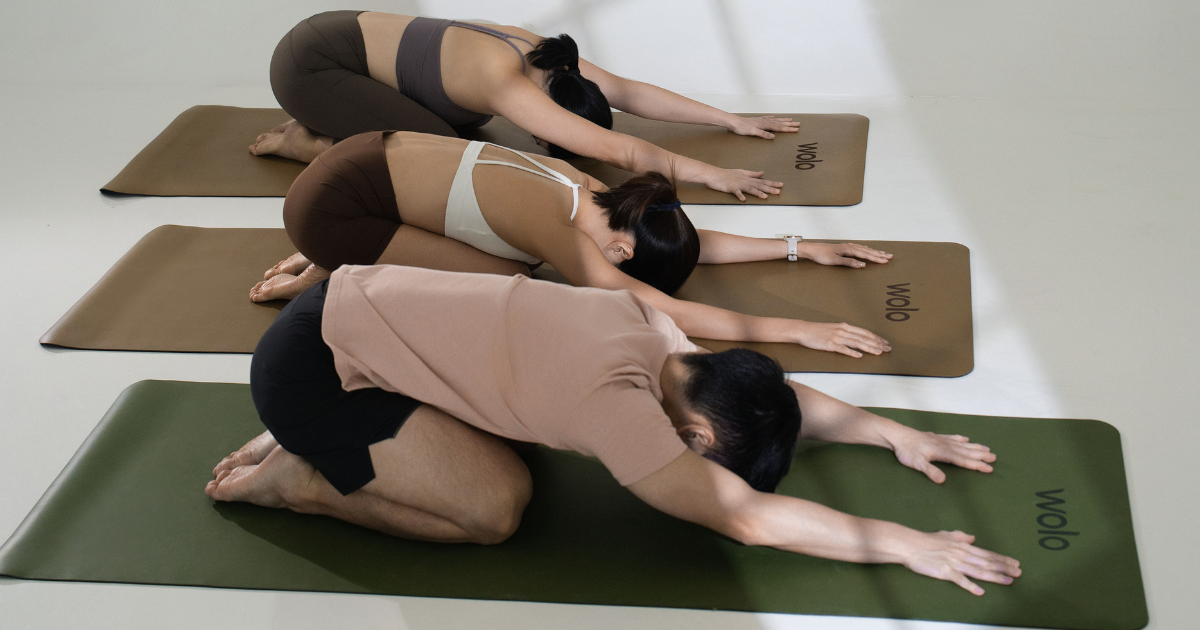The headstand, or Sirsasana, is often referred to as the "king of yoga poses." It’s a powerful inversion that challenges your balance, builds strength, and helps you overcome mental blocks.
While it might seem intimidating, with the right preparation and mindset, anyone can learn to do a headstand safely and confidently.
In this guide, we’ll break down everything you need to know to master the headstand—from the benefits to step-by-step instructions, common challenges, and tips for safety.
What Is a Headstand in Yoga?

The headstand is one of yoga’s most iconic poses, where your entire body is inverted, balanced on your head and arms. This inversion is not just a cool trick; it’s a foundational pose in yoga that promotes physical strength, mental clarity, and emotional resilience. Sirsasana is often seen as a representation of discipline and progress in one’s yoga practice.
Benefits of Practicing Headstands
Practicing headstands comes with a variety of benefits that enhance both the body and the mind. Before diving into each benefit, it's important to note that consistent practice is key to experiencing these advantages fully.
Physical strength. Headstands are an incredible way to build upper body strength, particularly in the core, shoulders, and neck. By balancing your entire body weight, you engage stabilizing muscles that are often underutilized. Research suggests that poses like the headstand can improve muscle endurance and overall posture over time.
Improved circulation. Inversions like headstands promote blood flow to the brain, which may help increase oxygen and nutrient delivery to brain cells. This improved circulation can enhance cognitive function and potentially alleviate mild headaches. Studies on inversions also suggest benefits for cardiovascular health by improving venous return.
Mental clarity. Practicing headstands requires intense focus and presence, which can help quiet a racing mind. This meditative quality allows practitioners to achieve a sense of calm and balance. Research in mindfulness and yoga indicates that focused practice can reduce stress and improve mental clarity.
Overcoming fear. Attempting a challenging pose like the headstand helps build confidence and mental resilience. By confronting the fear of falling and learning to trust your strength, you develop a mindset of perseverance that extends beyond the yoga mat.
Preparations Before Attempting a Headstand
Before diving into a headstand, it’s important to prepare your body and mind. Here are some essential steps:

- Warm up with poses like Downward Dog, Dolphin Pose, and Forearm Plank to activate your shoulders and core. These poses prepare your body for the strength and stability required in a headstand.
- Focus on building strength in your core, shoulders, and neck with exercises like boat pose, shoulder taps, and wall planks. A strong foundation minimizes the risk of injury.
- Always practice on a soft surface, like a yoga mat or against a wall. This provides a safety net if you lose balance and helps build confidence.
Step-by-Step Guide to Doing a Headstand
- Start in a kneeling position and rest your forehead on the mat while centering yourself with deep breaths.
- Place your forearms on the mat and interlace your fingers, forming a supportive base for your head.
- Gently place the crown of your head on the mat, cradled by your interlaced fingers.
- Engage your core and lift your knees off the mat, walking your feet closer to your head to create an inverted V-shape.
- Slowly lift one leg while maintaining control and balance, then gradually lift the other leg to align your body vertically.
- Focus on holding the pose by engaging your core and breathing steadily. Avoid shifting too much weight onto your neck.
- To exit, lower one leg at a time with control and rest in the Child’s Pose to recover.
Common Challenges and How to Overcome Them
One of the most common challenges in attempting a headstand is the fear of falling. This fear can often paralyze beginners, making it difficult to fully commit to the pose. To overcome this, start practicing against a wall for support. Knowing you have a safety net can help build confidence and allow you to focus on balance.
Another challenge is poor alignment, which can lead to strain or injury. Many beginners place too much weight on their neck, causing discomfort. To fix this, focus on distributing weight evenly between your head and arms. Engage your shoulders and core to support your body and maintain proper alignment.
Weak core or shoulders can also make headstands feel impossible. Strength-building exercises such as planks, push-ups, and boat poses are essential for creating the foundation needed to support your body in an inversion.
Modifications and Variations
Modifying a headstand can make it more accessible for beginners or add new challenges for advanced practitioners. Here’s an overview of variations with instructions for each:
Tripod Headstand

For this variation, place your hands flat on the mat and form a triangle base with your head and hands. Slowly lift your legs, balancing with the additional support of your arms. This version offers more stability for beginners.
Wall-Assisted Headstand

Practice near a wall by kicking your legs up gently while using the wall for balance. This is perfect for those still building confidence and strength in their core and shoulders.
Split-Leg Headstand

Once you’re in a stable headstand, separate your legs into a split position. This variation challenges your core stability and requires greater balance.
Straddle Headstand

From the headstand, spread your legs wide apart in a straddle position. This advanced variation emphasizes flexibility and control, making it a great option for experienced practitioners.
Safety Tips and Precautions
Headstands are rewarding but require mindfulness and care to avoid injury. Always prioritize safety when attempting this pose. Here are some essential tips to keep in mind:
- Avoid neck strain. Ensure your weight is evenly distributed between your head and arms, and avoid putting too much pressure on your neck.
- Invest in reliable equipment. Using a non-slip yoga mat and sturdy props, can provide added stability and safety while practicing headstands.
- Practice with supervision. If possible, have an experienced instructor guide you, especially during your first attempts.
- Know your limits. Skip headstands if you have any neck injuries, high blood pressure, or conditions that could make inversions risky.
FAQs About Headstands
How long should I hold a headstand?
For beginners, start by holding a headstand for just a few breaths (5-10 seconds) and gradually increase the duration as your strength and confidence improve. Advanced practitioners might hold the pose for up to a minute or longer, but always listen to your body.
What should I do if I feel dizzy?
Feeling dizzy can happen, especially if you’re new to inversions. If you feel lightheaded, come down immediately, rest in Child’s Pose, and breathe deeply. Avoid headstands on an empty stomach or after a large meal.
Can I practice headstands every day?
Yes, you can practice daily as long as your body feels comfortable. Daily practice helps build strength and confidence, but always prioritize rest if you feel sore or fatigued.
Do I need a spotter?
While not mandatory, a spotter can provide valuable support and confidence, especially for beginners. They can help guide your legs and ensure you don’t fall.
Practice Headstands with Patience and Consistency
Mastering the headstand takes time, patience, and consistent effort, but the journey is well worth it.
With the right preparation, technique, and mindset, you’ll not only improve your physical strength but also gain mental clarity and confidence. Remember to prioritize safety, embrace the process, and enjoy every step of your headstand journey. Happy practicing!





